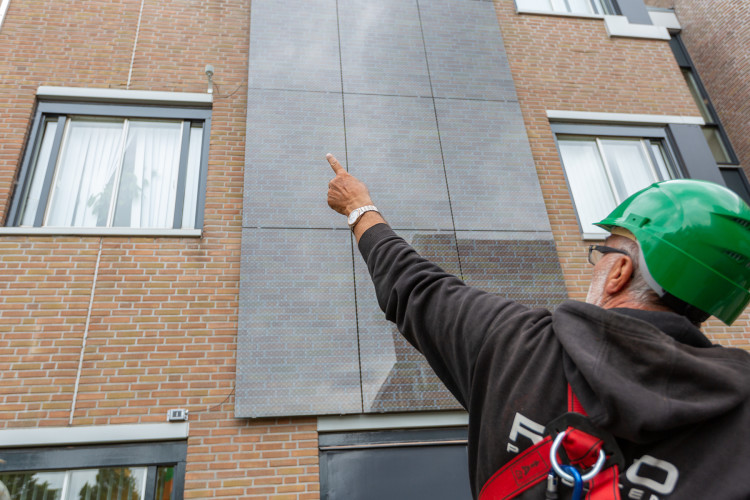Years of research, experimentation and testing have gone into the panels, which have been designed for incorporation into large surfaces. BAM said that they can be fabricated in any size and colour pattern, and will help to make the built environment energy-neutral in an attractive way.
Dutch research organisation TNO has developed the facade modules, working a research team of small and large companies, and a €1.1 million subsidy from the Netherlands Enterprise Agency (RVO. The facade still looks the same but now generates energy, said BAM. It also offers companies the opportunity to incorporate a work of art or logo.
In the BAM facade, a brick motif has been chosen that fits seamlessly with the existing facade in terms of appearance. Compared to a classic solar panel, the yield here is about a quarter less. In the case of facade modules that are optimised for colour and yield, the efficiency is about 85 per cent compared to non-printed panels. The facade panels in the BAM facade have a capacity of 220 watts peak (Wp) per panel.

The 'mimic design' facade modules are marketed by the start-up Solar Visuals, which originated from TNO and works closely with the architectural firm UNStudio and TS Visuals, a company specialising in the design and printing of large surfaces, such as in the Rotterdam Market Hall. Other partners are Solar Electricity and Design Innovation Group. For BAM Energy Systems, the product is seen as an innovative addition to its range of sustainable energy systems for homes and offices.
The ‘mimic’ modules are also seen as offering housing corporations the opportunity to make their stock more sustainable. They can be installed during major maintenance and renovation.
TNO will carry out extensive measurements to determine the yield under various conditions and to further improve the product. For example, work is being done to reduce the weight of the modules by replacing the glass that is currently used with plastic. At the same time, ways are being developed to increase the energy yield further. The team said that, within the foreseeable future, solar-powered facade modules should be able to compete in terms of cost price with the most common materials in the building industry in order to make homes and buildings more energy-neutral.
Got a story? Email news@theconstructionindex.co.uk



